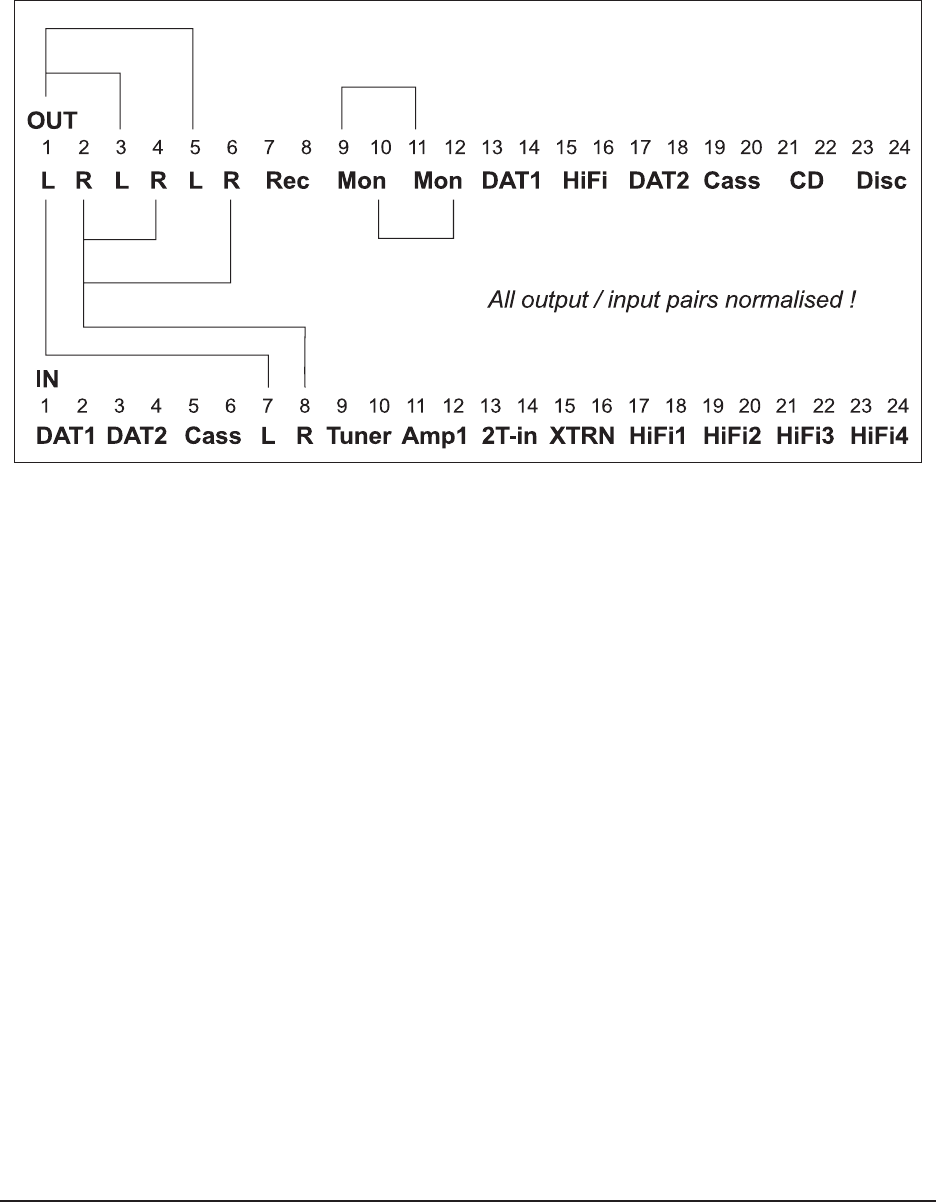
32
Bay 8:
L7 & R8 equals the L/R recording input to the 2-tracks. On Bay 8 we have hard-wired these to recording outputs
1 to 6 in order to drive all recorders simultaneously. Copying from any 2-track source to all recorders may be
done by patching the source outputs into L7 and R8.
We have assumed you have a HiFi amp available to enable a variety of secondary sources to be condensed
into the XTRN (external) input for easy monitoring selection via the HiFi amps input selector switch, if you
want to record from any of these sources, best patch direct from the individual outputs (17 to 22) rather than
the HiFi amp mix (15 and 16) for the cleanest result. (The exception being vinyl, which will need to use the HiFi
amps RIAA pre-amp to present the mixer with a flat response signal).
Fig. 8.2: Wiring for bay 8 (for advanced wiring scheme refer to section 11)
8.3 Looming problems
Loom wiring is an art in itself, and it is worth taking time out to get it right. First, it is important to avoid earth
loops. (A looped wire acts as an arial, picking up electromagnetic radiation.) Think of a tree: Every part of that
tree is connected to every other part, but only by one route. Thats how the total earth picture for your entire
studio should look. Dont take the earth off your power cable plug to reduce audible 50 Hz mains hum (or its
harmonics). Rather you should be looking at disconnecting the signal screen somewhere.
You could do worse than ensure that all screens are commoned at the patchbay in which case all unearthed
equipment would pick up earth from this point via a single screen (more than 1 route = an earth loop), while
mains-earthed equipment would have all screens cut at the equipment end.
+ Some quality equipment has an independent signal and mains earth. In this case, at least one
and possibly all screens should carry earth to the equipment. Sometimes the only way to find
out is suck and see.
Take care to ensure that using the patchbay does not disturb the studios earth architecture. Always use short
as possible patch leads with the screen connected at both ends.
If youre really serious about hum levels, you could run balanced lines wherever appropriate. The earth wiring
scheme would be the same as before. By shorting the ring to the barrel for all balanced jack sockets
connected to unbalanced equipment, you could use balanced patch leads throughout. (There is no percentage
in wiring a balanced output to a balanced input with a mono patch cord!) (See section 12 (UN)BALANCED
LINES.)
Having designed mains hum out of the system, make up your cable looms from the patchbays outwards, and
use cable ties, flexible sheaths, multicores etc. to keep the back of your racks tidy. Its going to get very busy
in there, and loose cables will inevitably mean lost signals. Possibly even lost equipment!


















